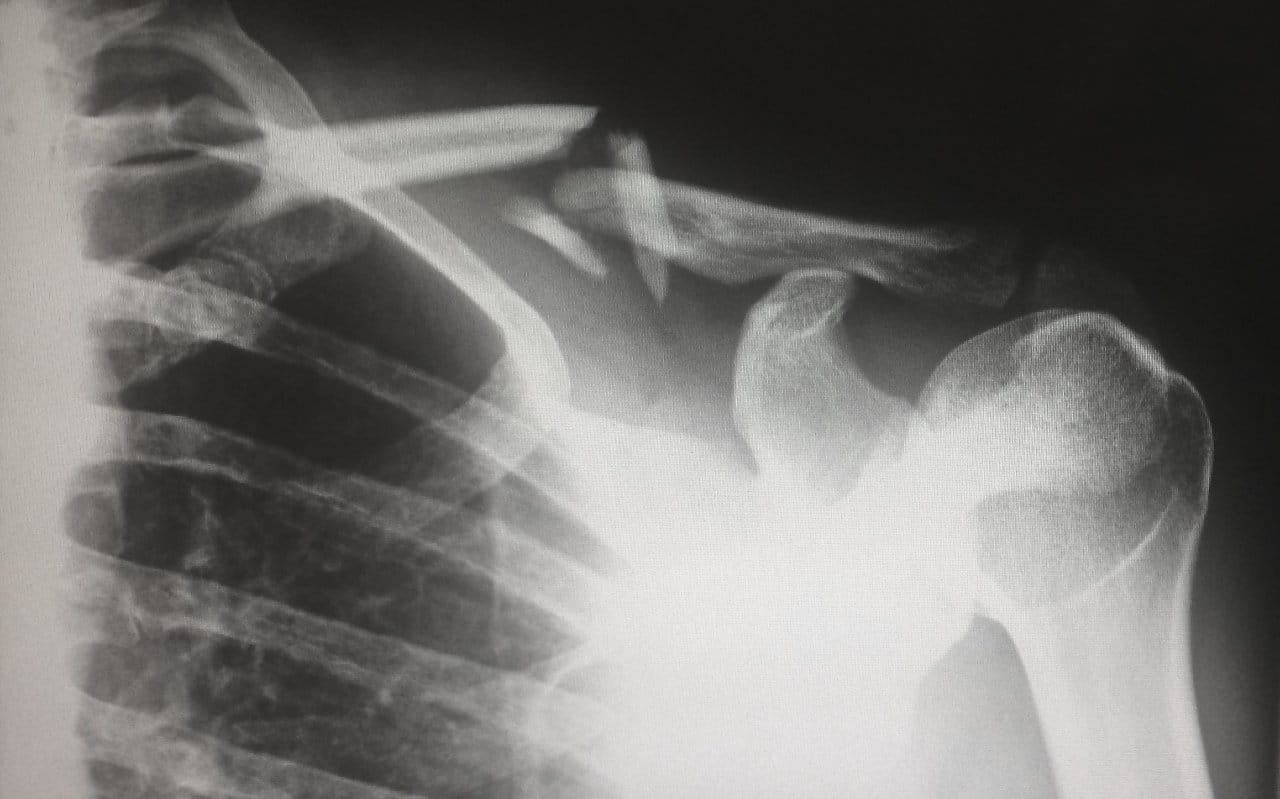Under ARS 13-1204, aggravated assault in Arizona occurs when a simple assault is committed along with certain aggravating factors. To secure a conviction, the prosecution must prove both the underlying assault and the presence of an aggravator.
A. Simple Assault. A conviction for aggravated assault requires the prosecution to first prove the underlying simple assault (Simple Assault + Aggravator). This means that the prosecution must first prove that you:
B. Aggravator. The prosecution then must prove that the assault was aggravated by one of the factors listed in ARS 13-1204. These factors fall within four main categories:
Aggravated assault based on the use of a deadly weapon or dangerous instrument does not require that the victim be injured in any way. The use of a deadly weapon or dangerous weapon when committing an assault creates a risk that a victim will suffer serious physical injury or death. So, it alone is enough to raise a simple assault to an aggravated assault.
Aggravated assault with a deadly weapon or dangerous instrument is a Class 3 Dangerous Felony. But if the victim is an officer or a prosecutor, then it is classified as a more serious Class 2 Dangerous Felony. Also, if the victim is a child under the age of 15, then it is a Class 2 Felony and a Dangerous Crime Against Children. Read more under Penalties for Aggravated Assault.
The prosecution must prove that you committed an assault and that you used a deadly weapon or dangerous instrument.
A deadly weapon means anything designed for lethal use.
Examples: A gun or knife
A gun must be operable to be a deadly weapon. If the gun was permanently inoperable, then Arizona law does not consider it to be a deadly weapon. But this is not necessarily true if the gun is only temporarily inoperable. The Arizona Court of Appeals has found that if a gun is only temporarily inoperable, such as if a revolver is missing a pin, then the gun still qualifies as a deadly weapon.
If the gun used was permanently inoperable, then the prosecution can still charge you with aggravated assault based on using a simulated deadly weapon. Whereas you must be sentenced to prison if you used a deadly weapon, you are eligible for probation if the weapon is considered to be a simulated deadly weapon (for a first-time offense).
A dangerous instrument means anything that is readily capable of causing death or serious physical injury under the circumstances in which it is used. It refers to a wide range of objects that can inflict death or great bodily harm.
Examples: A hammer, bat, golf club, or car.
The intended use of these items is not to cause death or serious physical injury. But if a person swings a hammer, bat, or golf club at another person’s head, or uses their car to purposely hit another person, then the circumstances in which the instrument is used transforms it into a dangerous instrument.
A common type of aggravated assault charge is vehicular assault where a person drives a car while under the influence of alcohol or drugs and causes an accident that injures another person. Go to Vehicular Assault to learn more.
The law recognizes that the ultimate trauma to the victim is no different whether a person uses an actual deadly weapon or a simulated deadly weapon to commit an assault. A fake gun causes real fear of death or serious physical injury, even if the fake gun cannot actually cause death or serious physical injury.
Aggravated assault with a simulated deadly weapon is a Class 3 Felony.
The prosecution must prove that you committed an assault and that you used a simulated deadly weapon.
This is typically a fake gun or toy gun. A person’s hand can also be a simulated deadly weapon if they hold their hand under their clothes to give the appearance of a handgun. Another example of a simulated deadly weapon is a nasal inhaler used to simulate the barrel of a gun pressed to the victim’s body.
Sometimes, a person commits an assault using a real gun, but then tosses the gun afterward. If the police are unable to find the gun used, then the prosecution most likely will not be able to prove that the gun was operable to make it qualify as a deadly weapon. So, the prosecution must charge the crime as aggravated assault with a simulated deadly weapon.

A simple assault can be committed when a person causes any physical injury, even when the injury is minor, such as a small scrape or bruise. A simple assault is elevated to an aggravated assault when a serious physical injury is caused to reflect the seriousness of the harm.
Aggravated assault causing serious physical injury is a Class 3 Dangerous Felony. But if the victim is an officer or a prosecutor, then it is classified as a more serious Class 2 Dangerous Felony. Also, if the victim is a child under the age of 15, then it is a Class 2 Felony and a Dangerous Crime Against Children. Read more under Penalties for Aggravated Assault.
The prosecution must prove that you committed an assault and that you caused serious physical injury to another person.
Serious physical injury is a physical injury that creates a reasonable risk of death, or that causes serious and permanent disfigurement, serious impairment of health, or loss or protracted impairment of the function of any bodily organ or limb.
Examples: Amputated body parts; paralysis; injuries requiring surgery or longer than normal healing time.
A simple assault can also be elevated to an aggravated assault when the force used caused a fracture or some other type of temporary but substantial injury. This type of injury is worse than a simple physical injury, but not as bad as a serious physical injury.
Because the injury does not rise to the level of a serious physical injury, this type of aggravated assault is classified as a Class 4 Felony. But if the victim is an officer or prosecutor, then it is classified as a Class 3 Felony.
The prosecution must prove that you committed an assault and that you caused:
This term is not defined by Arizona statute. So, whether temporary but substantial disfigurement was caused will depend on the facts of a case and will be up to a jury to decide.
When there is no statute that defines a term, then the common meanings are used. Arizona courts have turned to dictionaries for definitions. Temporary has been defined to mean lasting for a limited time. Substantial has been defined to mean considerable. And disfigurement has been defined to mean to blemish or spoil the appearance or shape of.
A jury will consider factors such as the injury’s seriousness, location, duration, and visibility to others to decide if it is temporary but substantial disfigurement.
To deal with rising issues of domestic violence, in 2010, Arizona created a new type of aggravated assault based on the common domestic violent act of a person strangling or suffocating another person. This type of felony assault is committed when the assaulter and the victim have a relationship that could be classified as a domestic violence relationship under the domestic violence statute A.R.S. § 13-3601.
Aggravated assault based on strangulation or suffocation and a domestic violence relationship is a Class 4 Felony and Domestic Violence Offense.
The prosecution must prove that you committed an assault and that you intentionally or knowingly impeded the normal breathing or circulation of blood of another person:
You have any of domestic violence relationship as listed in ARS 13-3601. This includes relationships such as:
The law recognizes the sanctity of a person’s home. So, when you go into someone’s home to assault them, then the assault is elevated from a misdemeanor assault to a felony assault.
Aggravated assault in a person’s private home is a Class 6 Felony.
The prosecution must prove that you:
Going into another person’s home with the intent to start a fight with them and then provoking them into a fight; going into another person’s home with the intent to hit them and then hitting them.
A simple assault becomes an aggravated assault when the assault is committed against certain people who the law considers as worthy of special protection. This includes vulnerable victims and victims who hold certain positions in society—such as an officer or a health care provider. A complete list of these victims can be found in ARS 13-1204. Some of the more common types of victims that will transform a misdemeanor assault into a felony assault are listed below.
The prosecution must prove that you committed an assault and that you knew or had reason to know that her person assaulted was a:
Generally, the prosecution must also prove that the victim was engaged in the execution of their official or professional duties. The exception is when the victim is a police officer. A police officer does not have to be engaged in their official duties to make an assault an aggravated assault.
Aggravated assault based on a victim’s status is a Class 6 Felony. The exception is when the victim is a police officer. When the victim is a police officer, then the aggravated assault is a Class 5 Felony. And when the victim is a police officer and any physical injury results, then the aggravated assault is bumped up to a Class 4 Felony. The seriousness of the felony is also bumped up when the victim is a prosecutor and any physical injury results. The aggravated assault goes from a Class 6 Felony to a Class 5 Felony. Any physical injury includes even a minor injury such as a small scrape or bruise.
The prosecution must prove that you committed an assault and that the person assaulted was:
Aggravated assault against a victim that the law considers helpless is a Class 6 Felony.
This includes when a victim is sleeping. It could also include an elderly victim whose ability to resist was substantially impaired by their age.
The aggravated assault sentence you should expect depends on such things as:
1. Which factor aggravates the assault and its corresponding felony classification;
2. Whether there are any additional allegations by the prosecution, such as alleging that the aggravated assault is a dangerous offense, a dangerous crime against children, or a domestic violence offense.
A dangerous offense is a crime that involved the use of a deadly weapon or dangerous instrument; or the intentional or knowing infliction of serious physical injury on another person. If the prosecution proves that the aggravated assault was a dangerous offense, then you cannot be placed on probation and the aggravated assault sentence must include prison. This means that even if you have no prior criminal history, you cannot be placed on probation and must be sentenced to prison.
A dangerous crime against children is any crime listed in A.R.S. § 13-705 that is committed against a child who is under 15 years of age. This includes aggravated assault with a deadly weapon or dangerous instrument and aggravated assault causing serious physical injury. If the prosecution proves that the aggravated assault was a dangerous crime against children, the you cannot be placed on probation and you must be sentenced to prison according to the dangerous crimes against children statute A.R.S. § 13-705.
As discussed above, if you and the victim have a domestic violence relationship as listed in A.R.S. § 13-3601 and you strangled or suffocated the victim, then the aggravated assault is classified as a Class 4 Felony and Domestic Violence Offense. But almost any of the other types of aggravated assault offenses can also be classified as a domestic violence offense if you have a domestic violence relationship. If you are convicted of aggravated assault as a domestic violence offense, then you will have to abide by special domestic violence terms of probation, if placed on probation. Additionally, you cannot have your gun rights restored.
If you have prior felony convictions and the prosecution is able to prove them, then you face even more prison time.

The types of aggravated assault offenses defined above that are Class 2 Dangerous Felonies include assaults that are aggravated by the following factors:
If convicted, the judge starts by considering the presumptive term of 10.5 years in prison. If there are any mitigating or aggravating circumstances, then the judge can go down to a minimum sentence of 7 years in prison and go up to a maximum sentence of 21 years in prison.
SIDE NOTE: intentionally or knowingly committed the aggravated assault on a police officer, then you face 10.5 years to 21 years in prison.
The types of aggravated assault offenses defined above that are Class 2 Felonies and Dangerous Crimes Against Children include assaults that are aggravated by the following factors:
If convicted, the judge starts by considering the presumptive term of 17 years in prison. If there are any mitigating or aggravating circumstances, then the judge can go down to a minimum sentence of 10 years in prison and go up to a maximum sentence of 24 years in prison.
The types of aggravated assault offenses defined above that are Class 3 Dangerous Felonies include assaults that are aggravated by the following factors:
If convicted, the judge starts by considering the presumptive term of 7.5 years in prison. If there are any mitigating or aggravating circumstances, then the judge can go down to a minimum sentence of 5 years in prison and go up to a maximum sentence of 15 years in prison.
The types of aggravated assault offenses defined above that are Class 3 Felonies include assaults that are aggravated by the following factors:
If convicted, the judge could place you on probation, with anywhere from 0 days in jail to 12 months in jail. The judge cold also sentence you to a prison term. If sentenced to prison, the judge starts by considering the presumptive term of 3.5 years in prison. If there are any mitigating or aggravating circumstances, then the judge can go down to 2 years in prison and go up to 8.75 years in prison.
The types of aggravated assault offenses defined above that are Class 4 Felonies include assaults that are aggravated by the following factors:
If convicted, the judge could place you on probation, with anywhere from 0 days in jail to 12 months in jail. The judge cold also sentence you to a prison term. If sentenced to prison, the judge starts by considering the presumptive term of 2.5 years in prison. If there are any mitigating or aggravating circumstances, then the judge can go down to 1 year in prison and go up to 3.75 years in prison.
The types of aggravated assault offenses defined above that are Class 5 Felonies include assaults that are aggravated by the following factors:
The judge could place you on probation, with anywhere from 0 days in jail to 12 months in jail. The judge cold also sentence you to a prison term. If sentenced to prison, the judge starts by considering the presumptive term of 1.5 years in prison. If there are any mitigating or aggravating circumstances, then the judge can go down to 0.5 year in prison and go up to 2.5 years in prison.
The judge could place you on probation, with anywhere from 0 days in jail to 12 months in jail. The judge cold also sentence you to a prison term. If sentenced to prison, the judge starts by considering the presumptive term of 1 year in prison. If there are any mitigating or aggravating circumstances, then the judge can go down to 0.33 year in prison and go up to 2 years in prison.
Regardless of the way in which you have been accused of aggravated assault, you are facing serious felony charges. With serious charges come serious risks of a conviction, imprisonment, job loss, and other penalties. You owe it to yourself to ensure that you employ the most effective aggravated assault possible. However, finding the best Phoenix aggravated assault lawyer is no simple task. You need to ensure that the attorney you choose has the requisite knowledge of the law and trial experience.
At Feldman & Royle, we are experienced Phoenix criminal defense lawyers who have represented hundreds of clients charged with aggravated assault in both plea negotiations and trials. We offer a confidential and free consultation in order to address your questions and map out a defense for your case.

No tags assigned to this post.